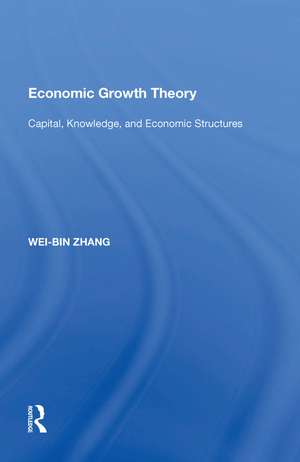Economic Growth Theory: Capital, Knowledge, and Economic Stuctures
Autor Wei-Bin Zhangen Limba Engleză Paperback – 18 sep 2018
Preț: 268.82 lei
Preț vechi: 316.02 lei
-15% Nou
Puncte Express: 403
Preț estimativ în valută:
51.44€ • 56.05$ • 43.34£
51.44€ • 56.05$ • 43.34£
Carte tipărită la comandă
Livrare economică 24 aprilie-08 mai
Preluare comenzi: 021 569.72.76
Specificații
ISBN-13: 9781138619517
ISBN-10: 1138619515
Pagini: 482
Dimensiuni: 152 x 235 mm
Greutate: 0.89 kg
Ediția:1
Editura: Taylor & Francis
Colecția Routledge
Locul publicării:Oxford, United Kingdom
ISBN-10: 1138619515
Pagini: 482
Dimensiuni: 152 x 235 mm
Greutate: 0.89 kg
Ediția:1
Editura: Taylor & Francis
Colecția Routledge
Locul publicării:Oxford, United Kingdom
Cuprins
Contents: Economic growth and growth theory; The One-Sector Growth (OSG) Model; Traditional growth theories and the OSG model; Some extensions of the OSG model; Income distribution and growth; Structural changes and development; Growth, unemployment, and welfare; Learning by doing, education and learning by leisure; Research and learning by doing; New growth theories and monopolistic competition; Complexity of economic growth; Bibliography; Index.
Descriere
This book aims to make a theoretical integration of well-established growth theories. It presents essential features of modem economic growth, which may be described as dynamic interdependence among capital, knowledge, population, economic structure, and exchange values.
